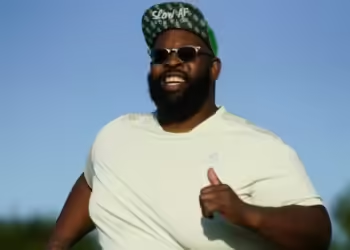Why the Slow Lane is the Best Lane: Runners Share Their Stories
In a world that often equates speed with success, a growing community of runners is embracing a different philosophy: the slow lane. This movement is about more than just pacing; it’s a celebration of enjoyment, mindfulness, and connection. Here’s a closer look at why slow running is gaining traction and how it’s changing lives.
A New Perspective on Running
For many, running has traditionally been about competition and speed. However, the rise of slow AF running invites participants to redefine their relationship with the sport. Runners are discovering that slowing down allows them to appreciate the journey rather than fixate on the finish line.
“I used to think running was only for those who could sprint,” says Sarah, a 35-year-old recreational runner. “Once I embraced the slow lane, I realized I could enjoy every moment. I started noticing the scenery, feeling the fresh air, and really connecting with my surroundings.”
Health Benefits of Going Slow
While many believe that only high-intensity workouts yield benefits, research supports the idea that slower running can be just as advantageous. It reduces the risk of injury, enhances recovery, and improves cardiovascular health without the strain.
“After years of pushing myself to keep up with faster runners, I faced several injuries,” shares Mark, a 42-year-old marathoner. “Switching to a slower pace has not only helped me heal but has also made running enjoyable again. My body feels better, and my mental health has improved too.”
Building Community Connections
The slow running movement has fostered a unique sense of community. Groups that embrace slower paces often prioritize inclusivity, welcoming runners of all levels. This camaraderie creates a supportive environment where participants can share stories, challenges, and triumphs.
“I joined a slow running club, and it changed everything for me,” says Jasmine, a 28-year-old who previously felt intimidated by the sport. “I’ve met so many amazing people who remind me that running isn’t about being the fastest; it’s about having fun and supporting one another.”
Mindfulness and Mental Clarity
One of the most profound benefits of slow running is the opportunity for mindfulness. As runners take their time, they become more aware of their bodies and the world around them. This practice can lead to improved mental clarity and reduced stress.
“I started using my runs as a form of meditation,” shares Alex, a 30-year-old software engineer. “When I slow down, I focus on my breath and the rhythm of my feet. It’s incredibly calming, and I find that my mind feels clearer afterward.”
Personal Stories of Transformation
Each runner has a unique journey that led them to embrace the slow lane. For some, it was a necessity; for others, it was a revelation. Here are a few stories that illustrate the transformative power of slow running:
- Linda, 50: After being diagnosed with arthritis, Linda thought her running days were over. “I was devastated. But then I discovered slow running. It allowed me to stay active without causing pain. Now, I run with my friends every week, and it’s become a cherished routine.”
-
David, 24: A former track star, David found himself burned out and disillusioned. “Competing was exhausting. When I started running slowly, I rediscovered my love for the sport. Now, I run for joy, not just for results.”
-
Rebecca, 39: Struggling with anxiety, Rebecca turned to running for relief. “At first, I tried to keep up with faster friends. But when I slowed down, I found peace. Running became my therapy, and I can finally clear my mind.”
Embracing the Slow Lane
So, how can you embrace the slow lane? Start by allowing yourself to enjoy the experience rather than focus solely on distance or speed. Here are a few tips:
- Set a Comfortable Pace: Choose a pace that feels right for you. This might mean walking or jogging at a leisurely speed.
-
Focus on Your Surroundings: Pay attention to the sights, sounds, and smells around you. Engage with nature and the community.
-
Run with Friends: Find a group that shares your pace. The social aspect can make your runs more enjoyable.
-
Listen to Your Body: Pay attention to how your body feels. If you need to slow down, do it!
-
Celebrate Small Wins: Whether it’s a new route or simply completing a run, acknowledge your achievements, no matter how small.
Conclusion
The slow lane is not just for those who can’t keep up; it’s for anyone who wishes to deepen their relationship with running. As stories from the slow AF running community illustrate, slowing down can lead to enhanced enjoyment, improved health, and a stronger sense of community. So, next time you lace up your shoes, consider taking a slower path. You might just find that it’s the best lane after all.




